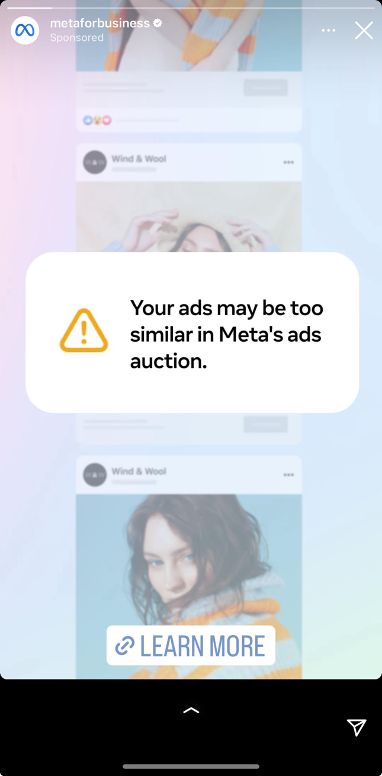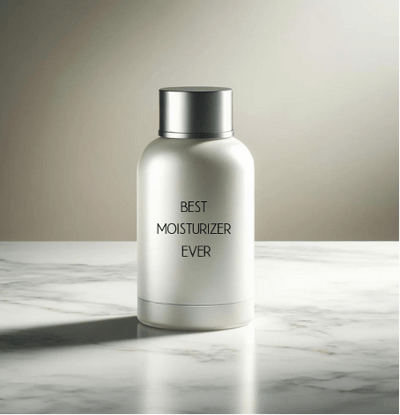The year is 2018: Facebook was actually called Facebook, Prince Harry and Meghan Markle tied the knot, Avengers dominated the box-office, “TikTok” meant time is running out, and your brand’s Facebook Ad campaigns were thriving, powered by lookalike and interest-based audiences.
(#THRIVING)
Yes, 2018 was six years ago, and yes, 2018 was a vastly different time for Facebook Ads. Audiences were arguably the biggest lever that advertisers and brands could lean into for maximum performance. The Audiences feature included interest-based audiences, now known as detailed targeting and lookalike audiences.
Imagine you are a beauty brand selling skin-care products. It would be perfectly logical to target various interest-based audiences, including products like, “moisturizers, serums, cleansers” in one ad set, and then to target specific problems in another ad set such as, “anti-aging, wrinkles, dull skin, etc.” and see which worked better. The next step was fairly straightforward: find the winning ad set based on a KPI and put more money into the winning audience. These interest audiences worked extremely well, as Meta had a substantial amount of data on user behavior, and user privacy was not nearly as centric as it is today. The targeting was based on things like:
- Ads users click
- Pages users engage with
- Activities users engage in across Meta technologies related to things like their device usage and travel preferences
Another audience strategy that worked well was utilizing lookalike audiences. Meta defines lookalike audiences as, “a way your ads can reach new people who are likely to be interested in your business because they share similar characteristics to your existing customers.” Lookalike audiences were a fantastic way to tell Meta who your best customers were, based on myriad signals like:
- Zip code
- Age/gender
- Purchase value
Meta was able to essentially duplicate and expand that list with new users that you could then target in your ad campaigns.
2018 was a gravy train for lookalikes: upload a list of all your purchasers, build a 1% lookalike, and let it ride while the return on ad spend (ROAS) soared. For the savviest of social media buyers, lookalikes were tested based on the data source (pixel data vs. CRM data), and the CRM data was often segmented (one time purchasers vs. VIP purchasers). Similar to interest audiences, the winning lookalikes could be easily identified; media budgets then pivoted to ensure top performing audiences received the most spend.
Fast forward to 2024: interest-based and lookalike-audiences are on the proverbial back burner.
What’s replacing them? Broad audiences.
How is this possible? Creative.
A brand’s creative is the new interest-based or lookalike targeting. Creative, here, means the actual ads (images, videos, or gifs) that run in your brand campaigns.
At a recent Meta Beauty Summit, Meta reported that creative drives 56% of the auction outcome—over half. While they didn’t comment on what percentage the audience makes up, Meta has moved toward a broader audience setup with the widespread rollout of the Advantage+ suite. Meta recommends starting broad, with a suggested audience size of 10M people. The rationale is that with the larger audience, the auction will have more opportunities to deliver ads against the objective and optimize.
So, what does this mean? Brands must diversify to get the most from creative and its 56% impact on auction outcomes.
Meta is encouraging the concept of creative diversity, exemplified here:

Here are several of the best ways to incorporate creative diversity in your brand’s ad account.
- Formats (image/gif/video/carousels)
- Creative diversity can mean that a good blend of images, gifs, videos, and carousels run at once. Don’t get too over-indexed on any one type. Running 100% video is not ideal, because there are millions of Meta users who have shown a higher propensity to interact with static images. Relatedly, don’t write off carousels just because they didn’t work two years ago: test them out and diversify your creative with various asset formats.
- People (ages/races/genders)
- Don’t make the mistake of featuring a singular type of person in all of your brand ads. Your customer base is likely a wonderfully diverse and eclectic group of people who vary in ages, genders, skin colors, etc. Create ads that are tailored to specific audience segments.
- Product Shots vs. Lifestyle
- Too often we see brands interpreting creative diversity as implementing an image like this:

vs. an image like this:

While the above is an overly simplified example for illustration purposes only, it is not what creative diversity means. These are similar shots that feature a product, which just so happens to be the Best Moisturizer Ever(!) The Meta algorithm will likely deem these two ads very similar and so the audience it reaches will be very similar. Instead, try your favorite product shot vs. something like this:

While the humor element may not always be on brand, we recommend testing a lifestyle shot with text overlays. This style of ad is highly likely to target a different subset of the audience than the more traditional product shot.
4. HiFi vs. LoFiThe onset of TikTok and Reels has put the UGC, LoFi-style creative front and center. Leaning into what is most native and natural to a platform is always a good way to drive strong performance from creative. However, don’t put all your eggs in the LoFi basket because there are still users who respond better to HiFi-style creative.
To close, if you want to reach users who are interested in your brand’s best-selling products, let the creative lead the way. Tailor ad creative to specific audience segments while focusing on relevant messaging and visuals that resonate with user needs and interests.
At Stella Rising, our award-winning social team helps brands navigate today’s top platforms, breaking through to the right users in the right way. Looking to shine amidst the cluttered landscape? Connect with us.



COMMENTS